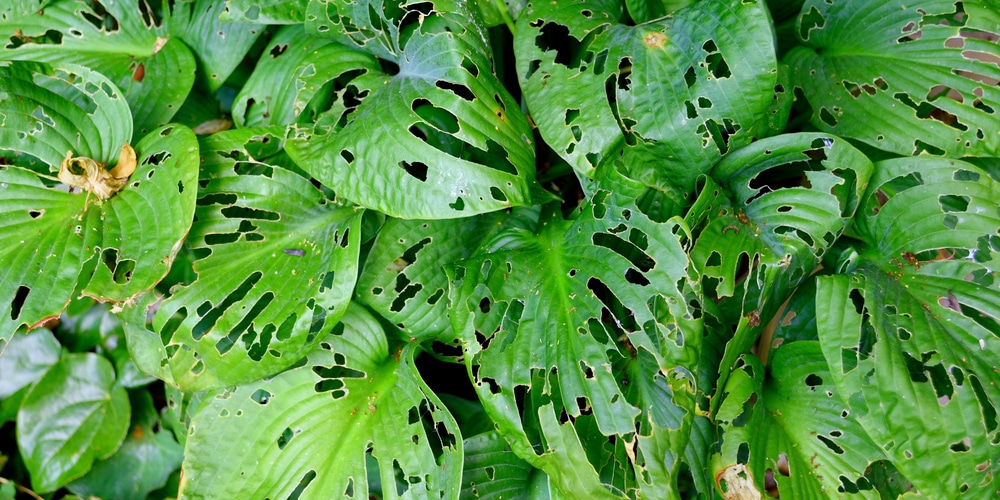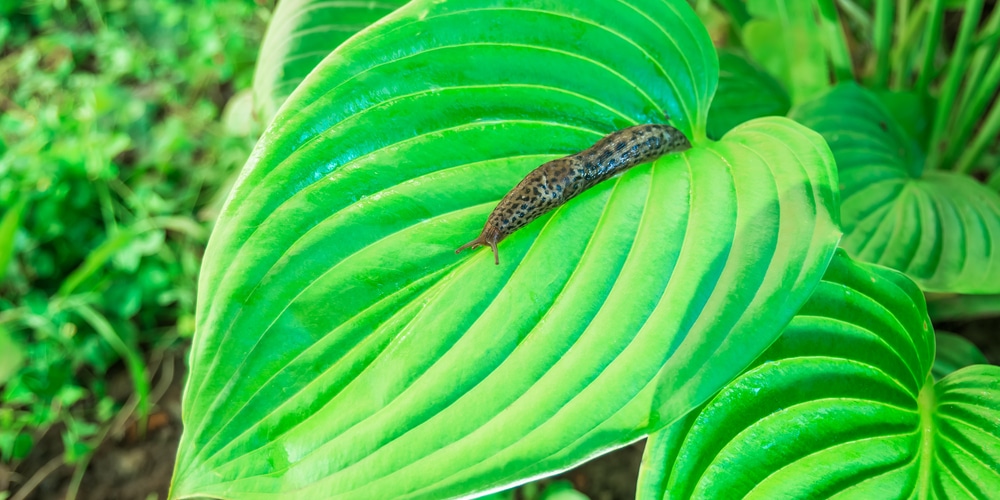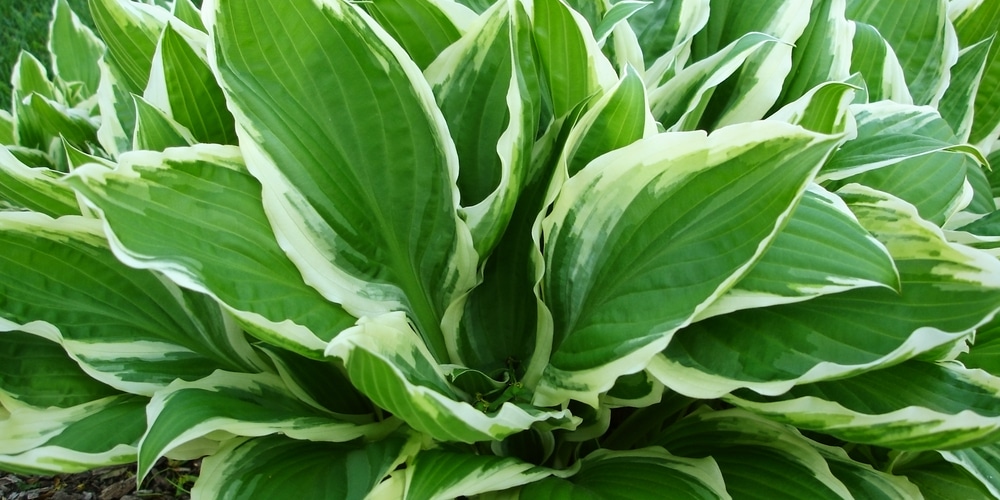Slugs love hostas, and their damage can range from small nibbles to complete destruction of the leaves. If you find them in your hostas, there are a few things you can do to get rid of them.
There are natural ways and chemical options to get rid of these pests in your garden. You can go with remedies like diatomaceous earth, coffee grounds, or beer traps. If you have a serious infestation problem, you may need to resort to chemical options such as ammonia or pellets.
Whichever method you choose, getting rid of them in your hostas is essential to keeping your plants healthy and vibrant.
Why Are There Slugs in Your Hostas
Slugs are a common problem in gardens, and they particularly love to feast on hostas. There are a few reasons why they are attracted to these plants.
Shady and Moist Conditions
Hostas are typically grown in shady, moist conditions which is exactly the sort of environment that they like. This type of environment is cool and damp, and it provides the perfect hiding place for them during the day.
Large and Fleshy Leaves
These plants have large, fleshy leaves that are easy for them to chew through. These are their ideal meals, and they will often devour an entire leaf in one night.
Sweet Sap
Many hosta varieties produce a sweet sap that further attracts them. This sweet sap is a tasty treat for them, and it can be difficult to deter them once they’ve had a taste.
What Slugs Do to Your Hostas
In the garden, slugs can be a real nuisance. These slimy pests love to munch on tender leaves, and they can quickly decimate a hosta bed. What’s more, they are often difficult to control, and they reproduce rapidly.
As a result, a few of them can quickly turn into an infestation. Although they are small, they can cause a lot of damage to the garden. They chew on leaves, leaving behind ragged holes. Over time, this damage can weaken the plant and make it more susceptible to disease.
How to Prevent Slugs on Hostas
The best way to prevent slugs is to create an unfavorable environment for them. This means making your garden less attractive to them.
Here are a few tips:
- Remove any debris or mulch around the base of the plant. Slugs love to hide in these dark, damp places.
- Water your plants in the morning so that the leaves have time to dry during the day.
- Avoid using chemical fertilizers, as these can actually attract slugs.
- Pick them off by hand and dispose of them in soapy water.
How to Get Rid of Them
Slugs can do a lot of damage to your plants, so it’s important to take action quickly. Here are some tips for getting rid of these shell-less mollusks in your garden:
Inspect Your Plants for Signs of Damage
They feed on the leaves of plants, so you may notice holes or damaged areas on the leaves of your hostas. If you see any damage, remove the affected leaves and dispose of them to prevent the spread of the problem.
Identify Where the Slugs Are Coming From
They often hide in damp, dark places during the day, so look for them in areas like under rocks or logs, or in mulch or leaf litter. Once you’ve found their hiding place, you can remove them by hand or use a pesticide designed specifically for slugs.
Use Natural Remedies
One popular option is to sprinkle diatomaceous earth around the base of the plant. This powder, made from fossilized algae, works by dehydrating them.
Another option is to mix together water and vinegar in a spray bottle and spritz the leaves of the hosta. The vinegar will discourage them from eating the leaves.
You can also try using coffee grounds or crushed eggshells as a barrier around the hosta. The sharp edges will deter them from crossing.
Resort to Chemical Options
If natural remedies don’t work, you can always resort to chemicals such as ammonia. Ammonia is toxic to them and will kill them on contact.
You can also use pellets, which are designed specifically for killing these pests. Be sure to follow the instructions on the packaging carefully and apply the pellets around the base of the plant, taking care to keep them away from children and pets.
Take Steps to Prevent Future Invasions
They are attracted to moist conditions, so make sure your garden is well-drained and free of standing water. You can also discourage them by placing barriers around your plants.
Slugs in Hostas: Final Thoughts
If you’ve ever had the unfortunate experience of finding slimy slugs in your garden, you know just how frustrating it can be. These pesky creatures can wreak havoc on your plants, and they can be difficult to get rid of.
It is important to take action quickly to prevent further damage. Be sure to inspect your plants regularly for signs of damage and take steps to control the population. With a little effort, you can get rid of them in your garden and enjoy a healthy hosta bed all season long.
Related Article: Do Slugs and Snails Eat Tomato Plants?


